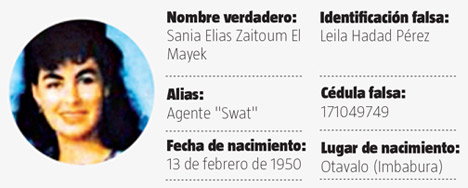Ecuador. The CIA Agent Known as Swat, plus Others
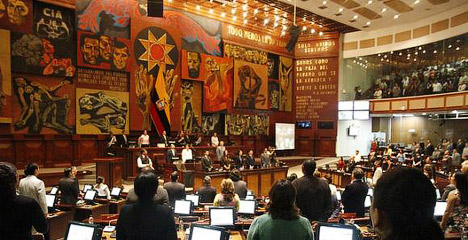
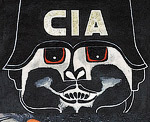 A mural hanging inside the Ecuadorian parliament building by the famous Ecuadorian painter Oswaldo Guayasamín, titled «Imagen de la Patria», includes an image of a grinning skull in a helmet emblazoned with the acronym «CIA». When the mural was first unveiled in August 1988, Guayasamín explained that this image epitomized all the foreign threats to his native country. And for almost three decades this «CIA skull» has gazed out at the deputies in parliament with a sinister grin.
A mural hanging inside the Ecuadorian parliament building by the famous Ecuadorian painter Oswaldo Guayasamín, titled «Imagen de la Patria», includes an image of a grinning skull in a helmet emblazoned with the acronym «CIA». When the mural was first unveiled in August 1988, Guayasamín explained that this image epitomized all the foreign threats to his native country. And for almost three decades this «CIA skull» has gazed out at the deputies in parliament with a sinister grin.
The CIA’s fingerprints are visible in dozens of incidents in Ecuador in which politicians who threatened US foreign policy were eliminated. For example, in May 1981 the airplane carrying President Jaime Roldós crashed in the province of Loja, a mountainous region of Ecuador. President Reagan had had a hostile relationship with the Ecuadorians: Roldós had refused the invitation to his inauguration and maintained friendly relations with the Sandinistas in Nicaragua and the Cuban government. He also demonstrated his solidarity with the Revolutionary Democratic Front in El Salvador, which opposed the military dictatorship. Roldós was planning to reorganize Ecuador’s oil industry, jeopardizing the interests of transnational oil corporations. Roldós was discarded because of a «whole array of grievances».
Once Rafael Correa took office, the CIA stepped up its work in Ecuador. In a recent interview Correa mentioned that in the early days of his administration a certain American diplomat requested a meeting, during which he introduced himself as «the official representative of the CIA» in Ecuador. That individual also emphasized that he acted independently of the US ambassador. As Correa noted, at that time «the Americans still thought they could take control of our government».
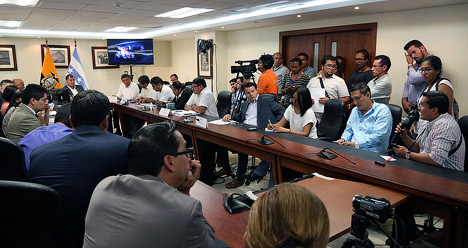
The impetus for Correa’s most recent revelatory statements about the subversive activities of US intelligence in his country was an incident involving a CIA agent codenamed «Swat».
From 1984 to 2007, a certain Leila Hadad Pérez, a woman of Lebanese descent, operated in Quito as an illegal CIA agent. At first she used a beauty salon as her front, and later a shop that sold carpets. Her real name was Sania Elias Zaitoum El Mayek. Swat was primarily interested in high-ranking officers in the armed forces and police. Their collaboration was underwritten with monthly «gratuities» paid out in dollars – equal to many times their official salaries – as well as the promise of a steady climb up their career ladders. Thanks to Swat’s efforts, many key posts in Ecuador’s intelligence services and armed forces were filled with CIA agents.
One of their main goals was to hinder Ecuador’s involvement in ventures aimed at integrating the continent and also to thwart any strengthened alliance with Venezuela. A campaign was also waged to compromise leaders who were friendly to Ecuador – such as Hugo Chávez, Inácio Lula da Silva, Néstor Kirchner, Evo Morales, and others.
Swat’s network of agents did all it could to prevent the closure of the US military base in Manta. Correa’s 2006 election campaign made no secret of what he planned to do about the US military presence there. Virtually every CIA field agent in the country was mobilized in response, as well as US military intelligence, which included politicians, police officers, military personnel, journalists, trade union and student activists, and NGOs. But their efforts failed. As Correa noted, the methods employed by Swat were «clumsy», and that «it was obvious she was the brains of the CIA in Ecuador». As a result, the Ecuadorian president decided to expel Swat from the country. In July 2009, the US military base in Manta was closed.
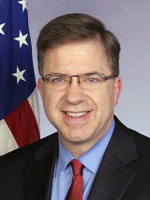 US Ambassador Todd Chapman tried to deny the existence of ties between the CIA and Ecuadorian politicians. With some irony, President Correa advised the American ambassador to learn «a little more about how these services work, if he doesn’t know».
US Ambassador Todd Chapman tried to deny the existence of ties between the CIA and Ecuadorian politicians. With some irony, President Correa advised the American ambassador to learn «a little more about how these services work, if he doesn’t know».
Rafael Correa is confident that his country is still in danger of a coup d’état. Some analysts believe that in the end, the CIA’s conspiracy in Ecuador will be led by Mario Pazmino, the former director of Ecuador’s intelligence services. Correa has accused him of concealing strategically vital information regarding the strike that was launched from across the Colombian border on an illegal FARC camp located inside Ecuador. From beginning to end, that attack was planned by the CIA and US military intelligence.
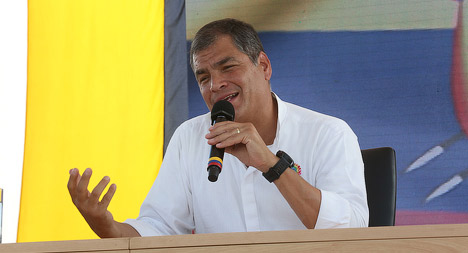
As a result of these disclosures, Ecuador’s compromised intelligence and counterintelligence agencies have been subjected to reforms, a National Intelligence Secretariat has been established, new staff have been recruited, and new, specialized equipment has been installed. All this will make it possible to effectively monitor the organizations that answer to the CIA, such as USAID and the National Endowment for Democracy (NED). It was quickly discovered that Karen Hollihan, an Ecuadorian of German-American descent, had been dispatched to restore the agent network in Ecuador. A man named Fernando Villavicencio worked as an aide to Hollihan. He claims to be a petroleum expert, but his primary activity was denigrating President Correa. Villavicencio was sentenced to 18 months in prison for defamation, but he escaped and now uses the Internet to disseminate articles written by the CIA about corruption in Correa’s government. Another active contact of Hollihan’s is named César Ricaurte, who heads the non-profit organization Fundamedios, which monitors «threats to media freedom» in Ecuador, helping critics of the regime become involved in the CIA’s campaign of exposés.
The NGO Civic Participation (Participación Ciudadana), which specializes in «investigative journalism» authored by the CIA, has received $265,000 just from the NED in the last two years to cover their «current expenses».
The Ecuadorian Mario Ramos, the director of the Andean Center for Strategic Studies, who analyzes US operations against Latin American governments that refuse to toe Washington’s line, noted on TeleSUR that in its subversive activities the CIA sizes up each country before choosing «an appropriate destabilization strategy: economic war, media or psychological warfare, and so on».
Ramos believes that in order to counter such subversive operations, Latin Americans must establish «an integrated defense strategy» that will span the orbits of diplomacy, the military, and finance, and must focus the efforts of their countries’ intelligence services on this task.
The exposure of the CIA’s subversive operations in Ecuador, the parade of TV close-ups of the perpetrators, and the analysis of the catastrophic repercussions for the country resulting from these disloyal activities – this is all proof that Ecuador’s political leaders and security services have reached the necessary conclusions.
